#philippe petain
Text
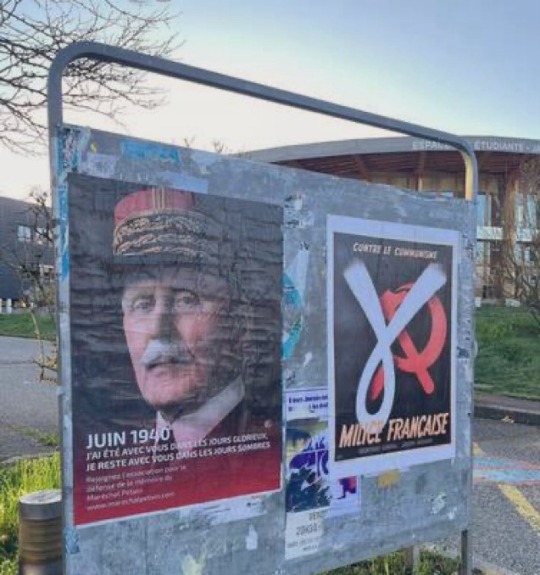
Extrême droite décomplexée.
4 notes
·
View notes
Note
Why did De Gaulle keep Petain from getting executed after WWII?
According to the court documents at Petain's trial, the court requested that his sentence not be carried out due to his age. According to statements from de Gaulle, the sentence was to be commuted to life in prison in light of his service in World War I, his age, and his ill health. I speculate that de Gaulle just figured age would take care of him and he didn't need to risk any domestic or international blowback.
Thanks for the question, Anon.
SomethingLikeALawyer, Hand of the King
10 notes
·
View notes
Text
Verdun : Le souffle de l'héroïsme et le prix du sacrifice

Le Rugissement du Tonnerre
Au cœur de l'hiver 1916, alors que le soleil se lève timidement sur les plaines de Verdun, un éclat fracassant déchire le silence de l'aube. Tel un rugissement du tonnerre, un déluge de feu s'abat sur les forts endormis de la ville et sur les tranchées où se terrent les braves soldats français. C'est le début de l'assaut, un assaut que les hommes n'oublieront jamais.
La Résilience des Héros
Face à cette déferlante de violence, les poilus se dressent tels des remparts, prêts à défendre chaque pouce de terre de leur patrie. Malgré la perte tragique du fier fort de Douaumont, leur bravoure ne fléchit pas. Sous la direction éclairée du commandant Philippe Pétain, les troupes s'organisent pour résister, pour riposter. La "Voie sacrée" se déploie comme une artère vitale, transportant l'espoir et le renfort jusqu'aux lignes de front. Chaque rotation, chaque relève, devient une nouvelle page dans le livre de l'héroïsme français.

Le Souffle de l'Enfer
Mais l'horreur ne connaît pas de limites dans cette danse macabre. Avec l'arrivée des gaz asphyxiants, l'air devient un poison mortel, suffoquant les corps et brisant les âmes. Et alors que l'été s'éveille, une autre tragédie se dessine à l'horizon. L'offensive sur la Somme, censée soulager le martyre de Verdun, se transforme en un bain de sang désespéré. Et quand enfin, après dix longs mois, le silence retombe sur les champs de bataille dévastés, il laisse derrière lui un paysage de désolation.
Verdun, témoin muet de l'humanité en souffrance, reste gravé dans l'histoire comme le symbole des sacrifices et des horreurs de la Grande Guerre.
Le lourd tribut de Verdun
À la fin de cette saga infernale, alors que les canons se taisent enfin et que les soldats retournent à leurs foyers meurtris, un silence pesant plane sur les champs de bataille dévastés. Mais dans ce silence, résonnent les cris des âmes perdues, les souvenirs des camarades tombés au combat. Le bilan humain de cette journée est lourd, insoutenable. Les pertes se comptent par centaines de milliers, chaque chiffre une vie brisée, chaque nom gravé dans la pierre comme un testament à l'absurdité de la guerre.
Du côté français, 379 000 hommes ont payé le prix ultime pour défendre leur terre sacrée, tandis que du côté allemand, 335 000 âmes se sont éteintes dans les tourments de la bataille.
Verdun, telle une veuve éplorée, pleure ses enfants perdus, offrant au monde un témoignage poignant de la fragilité de l'existence humaine et de la folie des hommes.
1 note
·
View note
Text


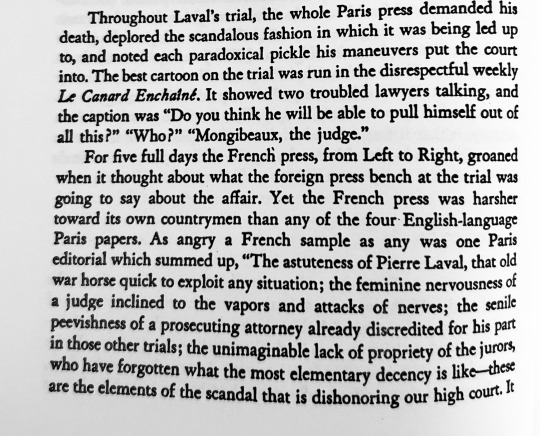
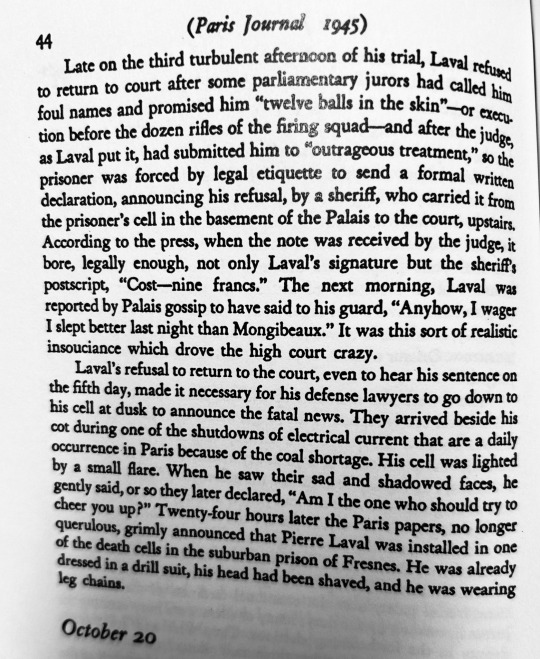
More interesting tidbits from Janet Flanner’s book relating to the recent extras casting call for women to play the wives of collaborators. In the summer/fall of 1945 there were two high profile trials of prominent Vichy collaborators, Philippe Petain and Pierre Laval. Both were convicted and Laval was executed by firing squad in October 1945. Petain was deemed too old by the court for execution and was allowed to serve in prison until his death. Louis and Claudia supposedly arrive in Paris in November 1945.
#iwtv#very interesting casting call I must say I didn’t think the show would use this part of the book
77 notes
·
View notes
Text
Latraus
Marshal Philippe Petain feared, sans collaboration as Chief of Vichy France (1940-1944), Germany would annex France. Although he doubted Germany would win the war, the ultra conservative hero of Verdun believed he was saving France from Left-Wing ideology and total destruction. June 15, 2023 11:26PM
0 notes
Text
A Mossad Agent You Say? Case Study 64
Francois Darlan
Francois Darlan death chart
This man was Jean François Darlan (7 August 1881 – 24 December 1942), a French admiral. Darlan was the head of the French Navy when France surrendered to Germany in 1940. He became an important minister in the Vichy French regime under Philippe Petain (Case Study 53). The Germans didn’t trust him as he made overtures to the allies and was forced to…
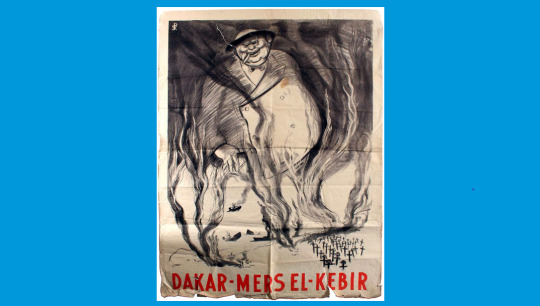
View On WordPress
0 notes
Text
nooo marshal philippe petain would never betray his country to become the bitch of the germans that's crazy talk
1 note
·
View note
Text
A WALK ALONG JALAN BESAR – GENTRIFYING

Image courtesy URA/Google Maps
One of the oldest neighbourhoods in the sparkling eye-shaped island of Singapore is undergoing the inevitable – renewal. The pre and post WW2 shophouses which line Jalan Besar or Main Street, are making way for the 21st century – condos, more condos and of course, chic cafes and restaurants. Many small, family-owned businesses which inhabit the old shops for generations have either moved into the interior of the island, like Bedok and Sin Ming, where specialized flatted factories permeate the landscape. There is no place it seems for old-and trusted businesses so near to the city – with gentrification as this, rental values have arisen, which as in so many inner-cities of the world means only one thing – survive on site or ship out. While it may seem justified to lament this change to the urban environment and also to the types of businesses which have moved in at the expense of the generational ones, there is always that clock which we should be mindful. It goes on ticking despite our best intentions to slow it just a little. Adapt, we had been told ever since….well ever since! That is the nature of the business world and the model which was adopted and remains.
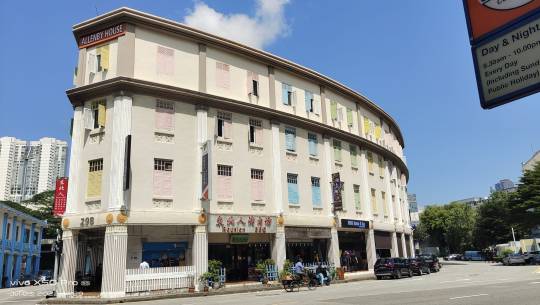
Allenby House, named after General Edmund Allenby (1)
Jalan Besar, which slithers parallel to Serangoon Road, remains a cultural magnet of sorts, like the latter, with its Little India community (of goldsmiths, textile merchants and North and South Indian restauranteurs and staff). Apart from a few eye-catching architectural monuments in Jalan Besar, the area remains a busy thoroughfare for Singaporeans, Migrants and Tourists alike. The little motels, hotels and eateries which lined the street offer a much-needed respite for many. And talking of food, the area has some very good places to boast, including a Nasi Ayam Penyek outlet at the fore. There is also the Ponggol Nasi Lemak outlet aft of the street, where it intersects with Sturdee Road. Mala Tang eateries however seem to be the trend in Singapore and Jalan Besar has its share.

Old and New
An evening walk along the street, perhaps just before the sun sets, may offer a pleasant surprise to us about this little and still-rusticated corner of urban Singapore. Of course, we may also learn a little about European and Colonial history along the way – Jalan Besar intersects with streets named after Petain (2), Foch (3), Kitchener (4), and King George (5), the daddy of Queen Elizabeth of the UK. A prominent trunk road is named after the Yemeni immigrant, Syed Alwi (1845-1926) from the established Aljunied clan. (6)
It is interesting how the names of the streets in the area blend international history into our cultural landscape.
Sources/References
1. Lawrence of Arabia . General Allenby | PBS
2. Philippe Pétain | French general | Britannica
3. Ferdinand Foch | Biography, World War I, & Facts | Britannica
4. Herbert Kitchener: The taskmaster | National Army Museum (nam.ac.uk)
5. George VI | Stutter, Brother, & Death | Britannica
6. Syed Alwi Road – three worlds, one road – The Heartlander Tourist (wordpress.com)
0 notes
Quote
An interesting case is David Lean's The Bridge on the River Kwai (1957). To sustain the morale of his fellow P.O.W.s, Colonel Nicholson (Alec Guinness) insists they make a good job of constructing a strategic bridge, as ordered by their brutal Japanese captor (Sessue Hayakawa). Gradually he comes to believe that his big, beautiful, peaceful bridge is of more spiritual importance than losing the war, and tries to prevent a raiding party (led by Jack Hawkins and guided by William Holden) from destroying it. He shows such courage and idealism that some spectators take his side, heedless, apparently, whether the railway enables the Japanese Army to put the entire British Army in prison-camps. After all, our side maintain what really matters, our self-respect, our pride - we whistle while we work... But Petain is Colonel Nicholson's middle name.
Raymond Durgnat, A Mirror for England
#raymond durgnat#a mirror for england: british movies from austerity to affluence#the bridge on the river kwai#david lean#philippe petain
4 notes
·
View notes
Photo
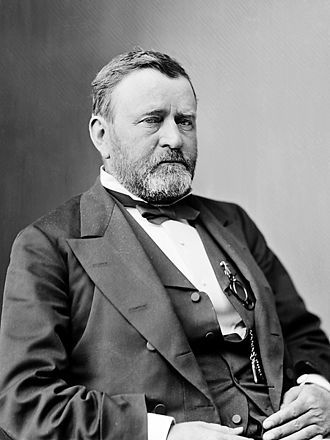
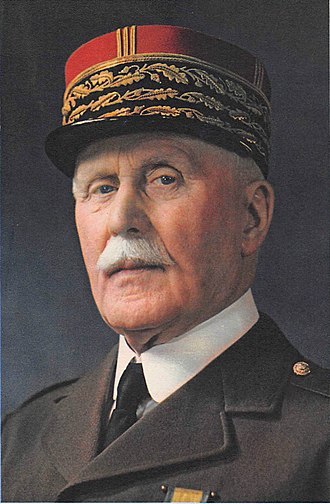
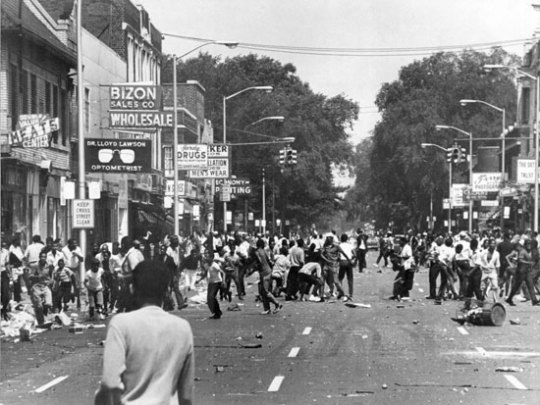
Some major events that occurred on July 23.
Photo One: American President Ulysses Grant dies, 1885.
Photo Two: The post-war legal processes against Philippe Petain begins. He will die in prison exactly six years, 1945.
Photo Three: The Detroit Riots begin, 1967.
1 note
·
View note
Photo
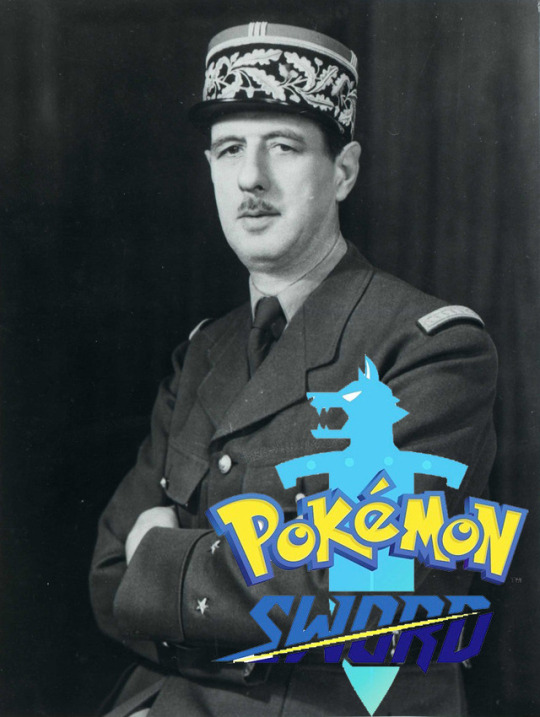

After some searching, I found the cover art for the French release of Pokemon Sword and Shield.
#pokemon#pokemon sword#pokemon shield#charles de gaulle#philippe petain#world war two#vichy france#french resistance
6 notes
·
View notes
Text
Three German Invasions of France: The Summer Campaigns of 1870, 1914 & 1940 :: Douglas Fermer
Three German Invasions of France: The Summer Campaigns of 1870, 1914 & 1940 :: Douglas Fermer
Three German Invasions of France: The Summer Campaigns of 1870, 1914 & 1940 :: Douglas Fermer soon to be presented for sale on the tremendous BookLovers of Bath web site!
Barnsley: Pen & Sword Military, 2013, Hardback in dust wrapper.
Includes: Plans of battle; Further reading list; Black & white photographs; Maps;
From the cover: Tension and rivalry between France and Germany shaped the history…

View On WordPress
#978-1-7815-9354-7#bismarck#books by douglas fermer#first edition books#franco prussian war 1870 1871#french artillery#french military history#german campaigns#german empire#german infantry#german military history#heinz guderian#jon wilkinson#joseph joffre#kaiser wilhelm ii#le gravelotte saint privat#philippe petain#rezonville#western front campaigns#weygand line#world war 1914 1918#xix panzer corps
0 notes
Note
Suppose Philippe Petain had died before WWII, would that have changed how Vichy France collaborated with the Nazis?
I've seen theories that if Petain, with his incredibly high popularity, wasn't around, Reynaud might have organized an evacuation to Algeria, and with that have a more coherent Free France in the colonies. Baudoin and Helene de Portes might have still convinced him though, in which case Laval simply becomes the head of state of Vichy France with Darlan as his popular military figure and little else changes.
Thanks for the question, Cle-Guy.
SomethingLikeALawyer, hand of the King
3 notes
·
View notes
Quote
I give to France the gift of my person, in order to alleviate her misfortune."
Philippe Petain
1 note
·
View note
Text


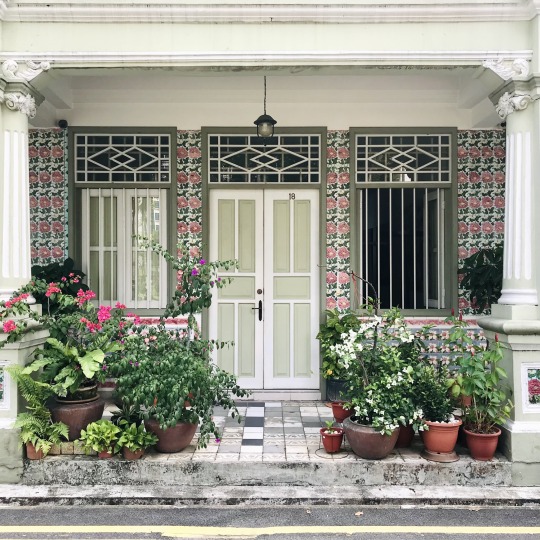
.
Peranakan shophouses on Petain Street.
Beautiful row of 18 shophouses line up, the only one in town with the same colors and tiles on all houses.
Horrible name for the French community.
British architect, EV Miller, designed this row of shop houses for this client- business man. “Mohamed Bin Haji Omar in 1930.
Almost all of the tiles found in Singapore are imported from Britain, the Netherlands, and Japan. The particular tiles that adorn Petain Road are Belgian Art Nouveau tiles from Gilliot & Cie (1896-1920), and relief moulded tiles from Fujimiyaki Tiles Works Japan (1915-1935).
In 1928, the street was named after Henri-Philippe Pétain, a decorated World War 1 French general who led France to victory against Germany in 1918. However, during the second World War, Petain through a series of circumstances, collaborated with the Germans. In 1945, under the government of De Gaulle, Petain was charged with treason in 1945 . The French community in Singapore has been relentlessly campaigning to stop honouring Pétain with a road named after him.
18032022
8 notes
·
View notes
Photo
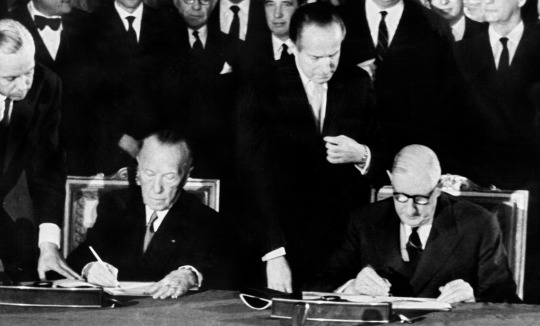


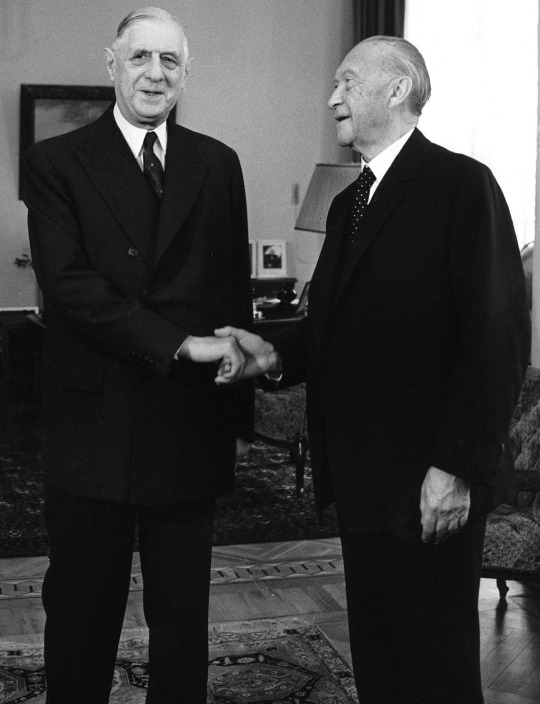

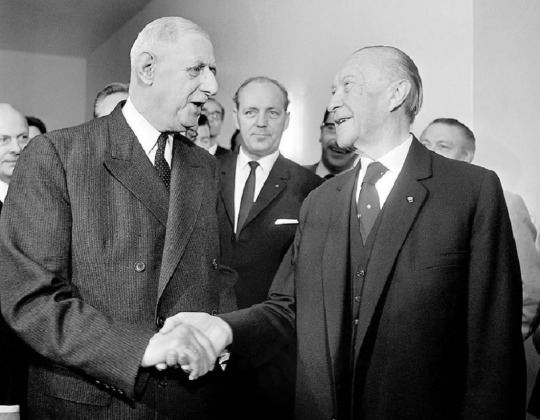
Zur Erinnerung an die Unterzeichnung des Elysee-Vertrages am 22.01.1963
Frankreich und Deutschland waren Erbfeinde. Drei große bewaffnete Konflikte innerhalb einer im historischem Maßstab kurz bemessenen Zeitspanne (1870/1871, 1914/1918 und 1940/1945) mit Millionen von Toten und unermesslichem Leid hatten Berge von Hass zwischen den Nachbarn angehäuft.
Doch ein Mann, der von Deutschen sowohl ganz privat als auch im nationalen Maßstab viel zu erleiden hatte, beschritt einen völlig neuen Weg.
Charles de Gaulle hatte im Ersten Weltkrieg als junger Hauptmann bei Verdun an opferreichen Kämpfen teilgenommen und geriet schwer verwundet in deutsche Kriegsgefangenschaft, in der er trotz fünf vergeblicher Fluchtversuche mehr als zwei Jahre zubringen musste.
1940 verteidigte Charles de Gaulle - zunächst als Oberst, später wurde er zum Brigadegeneral befördert - erneut sein Vaterland gegen deutsche Aggressoren. Seine Frau Yvonne und seine drei Kinder Philippe, Elisabeth und Anne gelang mit dem letzten Schiff aus Brest unter ständiger Gefahr der Versenkung durch die deutsche Luftwaffe die Flucht nach Großbritannien. Sein Landsitz “La Boisserie” in Colombey-les-deux-Eglises wurde von Wehrmachtssoldaten geplündert und stark beschädigt. Sein Schwager Alfred Cailliau wurde im Konzentrationslager Buchenwald inhaftiert, seine Nichte Geneviève Anthonioz wurde im Konzentrationslager Ravensbrück interniert, wo beide Unsagbares erleiden mussten.
Mit einem flammenden Appell wandte sich Charles de Gaulle am 18.06.1940 - einen Tag nach der offiziellen Kapitulation Frankreichs durch Marschall Petain - über den englischen Rundfunk an die Franzosen und forderte sie auf, den Kampf bis zur endgültigen Befreiung ihres Landes fortzusetzen. Damit stellte sich Charles de Gaulle an die Spitze des französischen Widerstandes gegen die deutsche Okkupation. Als Charles de Gaulle am 26.08.1944 in das befreite Paris einzog und unter dem Jubel seiner Landsleute die Champs Elysees hinunterschritt, hatte sich jedes seiner am 18.06.1940 prophezeiten Worte erfüllt.
Am 14.09.1958 - seit dem Ende des Zweiten Weltkrieges waren noch keine fünfzehn Jahre vergangen - empfing Charles de Gaulle, inzwischen Ministerpräsident der Vierten Republik (im folgenden Jahr wird er die Fünfte Republik initiieren und deren erster Staatspräsident werden) den deutschen Bundeskanzler Konrad Adenauer in seinem Landhaus “La Boisserie”. Niemals zuvor oder danach lud Charles de Gaulle einen Staatsmann in sein Privathaus ein.
Konrad Adenauer war mit einiger Besorgnis zu diesem Besuch aufgebrochen, war ihm doch von allen Seiten Charles de Gaulle als ein Nationalist und Feind Deutschlands geschildert worden. Doch Charles de Gaulle und Konrad Adenauer entwickelten sofort ein tiefes Verständnis und eine eben solche Sympathie für einander. Viele Biographen sprechen von "Liebe auf den ersten Blick” zwischen den beiden betagten Herren (Charles de Gaulle war damals 67 Jahre und Konrad Adenauer 82 Jahre alt).
Charles de Gaulle und Konrad Adenauer gingen offen und ehrlich mit einander um, und der eine war von der - nach außen vielleicht nicht sogleich zu erkennenden, im privaten Umgang jedoch umso deutlicher zutage tretenden - Herzlichkeit des anderen berührt. Beide Staatsmänner waren überdies Katholiken und zwar autoritäre, aber dennoch gütige Familienväter. Dass Charles de Gaulle in Konrad Adenauer einen Rheinländer und keinen Preußen vor sich hatte, der zudem niemals in einem Krieg gegen Frankreich gekämpft hatte, spielte gewiss auch eine große Rolle.
Das Weltbild der beiden Staatsmänner traf sich darin, dass die Versöhnung zwischen Deutschland und Frankreich die eigentliche Bedingung für einen dauerhaften Frieden in Europa war.
Nach diesem ersten gemeinsamen Treffen gab es viele weitere Begegnungen und einen regen Briefwechsel zwischen Charles de Gaulle und Konrad Adenauer, immer getragen von der tiefen gegenseitigen Sympathie der beiden Politiker.
Bei Adenauers Staatsbesuch in Frankreich 1962 bezeugten die beiden Staatsmänner in der - von deutschem Artilleriebeschuss noch immer gezeichneten - Kathedrale von Reims bei einem gemeinsamen Gottesdienst ihren Willen zur Aussöhnung zwischen ihren beiden Völkern.
Charles de Gaulle als Symbolfigur der nationalen Selbstbehauptung Frankreichs in deren dunkelster Stunde besuchte im Jahre 1962 das Land des ehemaligen Kriegsgegners und schaffte mit seinen triumphal gefeierten Ansprachen in deutscher Sprache (der damals 72jährige hatte sämtliche Reden selbst entworfen, mit den Dolmetschern daran gefeilt und sie anschließend auswendig gelernt) ein Wunder: Deutsche und Franzosen versöhnten sich. Nie wieder werden sie in blutigen, opferreichen Kriegen gegen einander die Waffen erheben.
Am 22.01.1963 wurde das epochale Aussöhnungswerk mit dem “Elysee-Vertrag” gekrönt.
Dass Charles de Gaulle und Konrad Adenauer dafür nicht mit dem Friedensnobelpreis geehrt wurden, empfinde ich als eine unverzeihliche Unterlassung.
© Text: Manuela Hertel
youtube
youtube
#Charles De Gaulle#konrad adenauer#elysee vertrag#deutschland#frankreich#deutsch-französische freundschaft#geschichte
4 notes
·
View notes